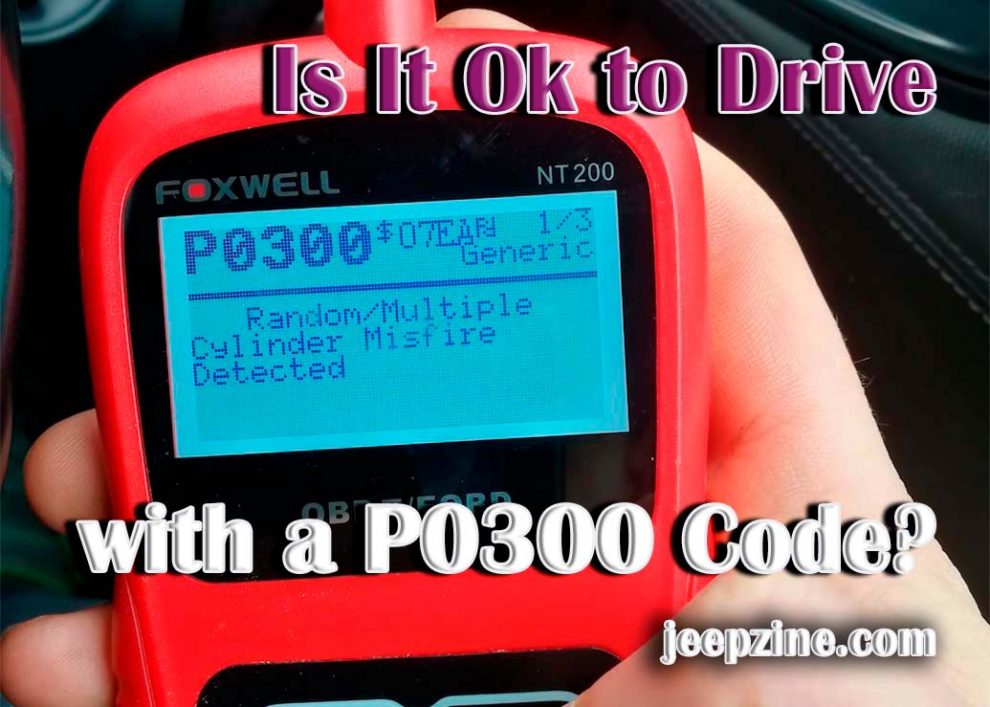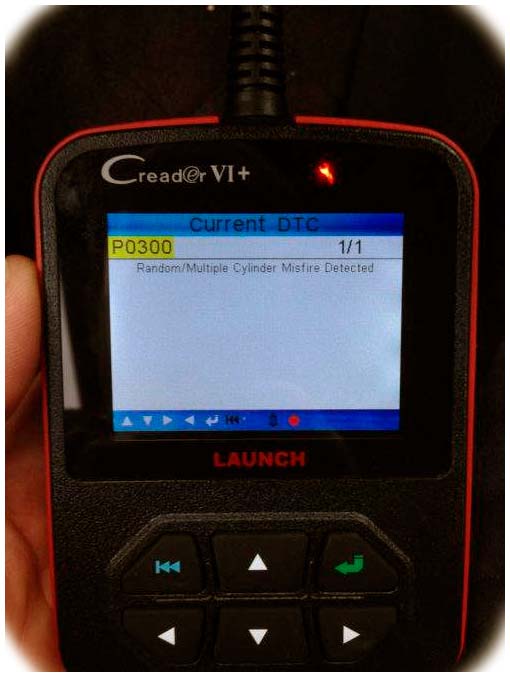A P0300 code is a diagnostic trouble code (DTC) that indicates random or multiple misfires in your vehicle’s engine. The engine misfires when it fails to ignite the fuel-air mixture in the combustion chamber. This can be caused by faulty spark plugs, spark plug wires, coil packs, or other components of the ignition system. It can also be caused by an excessively lean air-fuel mixture due to a vacuum leak or bad fuel injectors, as well as incorrect camshaft timing. A P0300 code can lead to considerable damage if not addressed right away. In this article, we will discuss how to deal with this issue and what steps you should take to ensure the safe and reliable operation of your vehicle.
What Is a P0300 Code And Its Causes
Code P0300 is a generic diagnostic trouble code that indicates random or multiple misfires detected in the engine and indicates that one or more cylinders are randomly misfiring. It means that the engine’s computer has detected inconsistent combustion in one or more cylinders, resulting in an uneven-running engine. A random misfire can cause serious damage to your engine if left unchecked for too long, so it’s important to address this issue as soon as possible. Several factors can contribute to the occurrence of this code.
Ignition System Issues: Faulty spark plugs, spark plug wires, coils, and other components of the ignition system can cause random misfires in the engine. Over time, these components may wear out or become damaged, resulting in weak or intermittent sparks.
-
Fuel System Problems: An excessively lean air-fuel mixture due to vacuum leaks or bad fuel injectors can lead to misfires in the engine.
-
Air Induction System: Problems with the air intake system, such as a dirty or malfunctioning mass airflow sensor (MAF), can lead to incorrect air-fuel ratios. This imbalance can cause misfires and trigger Code P0300.
-
Engine Mechanical Issues: Any mechanical problem that affects the combustion process can lead to random misfires. This includes worn piston rings, leaking valves, or a compromised head gasket. These issues can disrupt the proper compression and combustion within the cylinders.
-
Sensor Malfunctions: Faulty oxygen sensors or mass airflow sensors can result in an incorrect air-fuel mixture which leads to misfires in the engine. This can result in incorrect timing or fuel delivery, leading to misfires and the appearance of Code P0300.
It is important to note that Code P0300 can have multiple causes, and proper diagnosis by a qualified technician using specialized diagnostic equipment is necessary to pinpoint the exact underlying issue.
Symptoms of Code P0300
Code P0300 is a diagnostic code that indicates random misfires within the engine. It is important to address this code as soon as possible, as it can lead to more serious damage such as catalytic converter failure. Symptoms of this issue typically include poor fuel economy, lack of power, rough idle, and stalling or jerking while accelerating. Other symptoms include additional illuminated check engine lights related to cylinder-specific misfires or oxygen sensor codes. Additionally, an engine may produce white exhaust smoke due to unburned fuel entering the exhaust system. It is important for any driver experiencing these symptoms to have their vehicle inspected by a qualified technician immediately to resolve the issue and prevent further damage from occurring.
Is It Okay to Drive with a P0300 Code?
Driving with a P0300 code, which indicates random or multiple misfires in the engine, is generally not recommended. While the vehicle may still be operable, this can have several implications. The misfires can lead to a range of issues, including reduced engine performance, decreased fuel efficiency, and potential damage to the catalytic converter or other engine components over time. Additionally, the engine may experience rough idling, vibrations, and a lack of power during acceleration, which can affect the overall driving experience and potentially compromise safety. It is advisable to address the P0300 code as soon as possible by seeking a professional diagnosis and necessary repairs to ensure the proper functioning and longevity of the engine.
Diagnosing the Problem
To diagnose the problem and determine the appropriate fix for a P0300 code, you must have a capable scan tool at your disposal to read and interpret live data from your vehicle’s computer system. Additionally, you should also inspect all associated components such as spark plugs, fuel pressure regulators, vacuum lines, etc., before making any repairs or replacements.
How to Fix Code P0300?
Once the underlying cause of the code has been identified and confirmed, you can begin the repair process. Depending on the cause, this may involve replacing a faulty component such as spark plugs or coils, cleaning or replacing a clogged fuel injector, inspecting/replacing vacuum lines or gaskets, correcting any air-fuel mixture imbalances, etc. Additionally, it’s important to check for any worn or damaged engine components that may be contributing to misfires in multiple cylinders.
Conclusion
Dealing with a P0300 code when driving can be intimidating, but addressing the issue quickly and correctly is necessary to ensure the safe and reliable operation of your vehicle. It indicates random or multiple misfires in the engine, which can be caused by faulty ignition system components, fuel mixture issues, mechanical problems, or sensor malfunctions. It is important to recognize any symptoms associated with a P0300 code and seek professional diagnosis to determine the underlying cause. Once the issue has been identified and confirmed, you can begin repairs such as replacing faulty components or correcting air-fuel ratios as needed. Following these steps will help you restore your vehicle’s performance and ensure its overall safety for many years to come.


 Ignition System Issues: Faulty spark plugs, spark plug wires, coils, and other components of the ignition system can cause random misfires in the engine. Over time, these components may wear out or become damaged, resulting in weak or intermittent sparks.
Ignition System Issues: Faulty spark plugs, spark plug wires, coils, and other components of the ignition system can cause random misfires in the engine. Over time, these components may wear out or become damaged, resulting in weak or intermittent sparks.
Add Comment